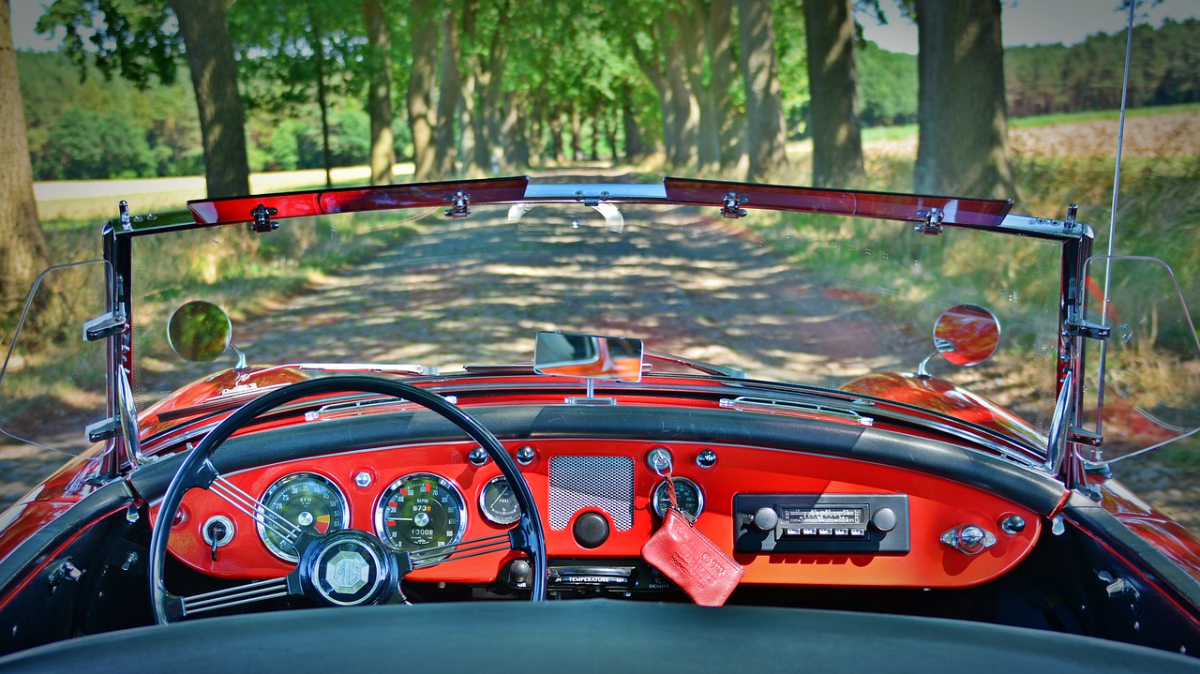Roof Repair And Replacement For Convertible Cars
When the warm summer days pass you by, and the winter begins to settle in, it's time for convertible top car owners to think about any repairs or replacements they need to make to their soft-top convertibles.
There are two main reasons for this. Firstly, during the summer, the convertible top of your car will see more use, and therefore is more likely to have suffered some minor wear. Secondly, you'll want to get everything ship-shape to handle the harsher winter weather.

The alternative materials of your soft-top, whether vinyl or fabric, and its lifespan can be extended through proper care and maintenance when it isn't being used as frequently.
This also provides you with the perfect opportunity to patch any small nicks or tears and maintain the electrical operating system, hopefully without resorting to a complete replacement of the convertible top.
However, while a convertible top replacement may sound like a daunting challenge, in most cases, it is not a complicated task. The numerous convertible top specialists throughout Britain can help with any replacement needs you might have. Of course, if you're feeling a bit handy, manufacturers often provide detailed instructions on how to replace your convertible top yourself to help cut costs.
Although, if prevention is what you're going for, here are a few tips on maintaining and repairing your convertible soft-tops.
Common Issues With Convertible Tops
The threat of your convertible top suddenly failing you is a worry for all convertible car owners. If you have a vehicle of considerable age, this threat becomes all the more likely.
Naturally, if you press the switch in your centre console and it doesn't work, pressing it a few more times might solve the issue for now. But if it persists, there may be something more serious at play.
The best way to troubleshoot the issue is to get to know your convertible top system. Luckily, most of these systems use the same mechanics to operate them, so you only need to learn about them once.
Given their similarity, the issues that convertible tops run into are also common between different models. However, they should be fairly similar for classic and new models. Here we'll take a look at a few of them:
If your convertible soft-top won't budge when you activate the switch, there is likely an issue with the relay, lift cylinders or fuse.
Another common issue with convertible soft-tops is the cover moving slowly when you raise or lower it. This is most often a problem with the lift cylinders.
Faulty lift cylinders or broken cables can also cause convertible tops to become stuck when in motion.
Other issues could be caused by faults or wear in the electric motor that drives the soft or hardtop of your convertible.

Of course, the source of any issue could always lie in the operating switch if it is damaged or faulty.
Replacing a Car Convertible Top
If you find that you need to replace your convertible top entirely, we have provided here a few tips on the process of making the replacement.
This guide only applies to soft-top installations rather than hardtop convertibles. Naturally, the first place to start with convertible top installation is by purchasing a replacement top and having it ready.
You should also familiarise yourself with the manufacturer's instructions and ensure you have the tools required to have your convertible top replaced.
The first step in replacing your convertible top is to remove the interior panels of your vehicle. Working to free the outer edges of the top before the window and the other main fastening points.
Finding where the top transitions into the side panels will help you know what to remove first, which will differ depending on the model of car you own. Of course, this is a lot easier if you remove the back seats of your car if possible.
The fastenings holding the top down will also differ between car models. Some will use screws, while others will have plastic fasteners. Naturally, unscrewing the screws will release the top.
However, you can use a screwdriver for the plastic fasteners to twist them free. Be prepared for some of these to break, perhaps buying some spares beforehand.
Removing the rear window is one of the trickiest parts of the process. However, it can be done in a jiffy with a little patience. In some cases, it is a better idea to remove the window before the trims, given that without removing the window, you won't be able to remove the top at all.
You can use a flathead screwdriver to prize the rubber lining around the glass windows or window material, but take great care not to tear or damage the rubber.
Once the rubber is loosened, you should be able to gently push the window out towards the rear of the car. It would help to have someone standing by to carry the material out of the window space if it is made of glass to be safe.
Pushing at the edges of the glass is the best technique, rather than putting too much pressure on the centre.
When removing the top strip of material, it's often best to start at the front of the convertible roof and work backwards, loosening whatever fastenings there are, whether screws or plastic fasteners.
Removing the trim can also help you find where the roof attaches to the sides to loosen the fastenings. Once this is done, check the remainder of the frame for any other screws or fasteners there might be.
If your convertible soft-top roof is made from vinyl, you will need to note where it is glued to the frame and the side panels. There will be more material than you need when fitting the replacement material, meaning you will have to trim it to size yourself.
The new material needs to match the previous size and shape of the old material exactly, or the roof won't operate properly.
Once you have removed the fastenings and loosened any glued pieces of material, you can peel away the roof section of the convertible top.
When this is done, you can begin the somewhat tedious task of removing all of the staples from around the window frame. Sometimes these can become rusted and break, but try to get all the staple pieces out with pliers.
Once the roof material is removed, find the rear trim stick and remove that. You can do this by removing the bolts that hold it in place, and the person assisting you can lift it out towards the rear of the vehicle.
You may need to squeeze the ends of the stick together to get it to come free. You might also find it useful to cut away whatever material is attached to the end of the trim stick but leave enough to grip it.
The top material is held to the trim stick by a thick portion of the material being inserted into the aluminium tube of the stick. You can wiggle this material free, given that it shouldn't be glued in place.
More often than not, this rear area of your car will be slightly dirty if you've been driving with the top down, so it's well worth cleaning back there while you have access to it.
The next job is to start putting things back together again. Most manuals will suggest that to install new parts, you simply reverse all the steps you've just performed. However, installing a new convertible top will require replacing the existing hold-down cables. The instructions on doing this will be in the manufacturer's information for your new top.
Once this is done, you need to feed the new material into the rear trim stick and have your assistant hold the stick in place while you bolt it back in.
Once the material is secure, stretch the new material over the frame's roof and attach it to the front trim stick. Ensure that the material is lined up properly to prevent wrinkling and apply the appropriate vinyl or material glue to attach to the front trim.
Working your way back along the edge of the frame, glue the material into place along the middle bows and trim the excess where necessary. You should also cut out small holes for the screws to fit in. Once this is done, you can reattach to side portions of the material and rivet the top portion where it meets the frame.
It would be best to have the roof material raised completely up and in the locked position for the next step. You need to cut out a space in the material for the window to go into.
After this, punch fresh staples into the areas where the previous ones were. Be careful not to pull the material too tightly. It will naturally tighten the more staples you apply.
Once the frame is fully stapled, you can work a thin amount of windshield sealer around the edge. You should then press the window material back into place from inside the vehicle on one side at a time.
Take care to ensure the sealant goes into the edge of the new curtain window material as you go round, pressing the material in.
Once all this is done, you can re-install all the features, such as trims and side panelling, that came out when you first started. The rubber trims around the material frame are likely to be the trickiest part of the reassembly.
But with a little patience, some silicone spray and the right tools, you should have them done in no time.
If you have purchased any treatments for different materials, such as vinyl treatment, you should apply this straight away as per the instructions.
Local Business provide classic car interior restoration for Leicester, Leicestershire and the surrounding areas. If you would like to follow up on any of our services, or if you would like to contact us, then please, follow one of the links below:
